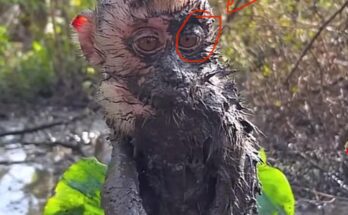
Showman was not part of a stable group. He had once belonged to a troop but was ousted by a younger, stronger male. Since then, he spent most of his days alone, watching other monkeys form bonds, play, groom, and sometimes mate. Though he had access to food, shelter, and safety, what he missed was connection.
As part of his solitary routine, Showman began displaying what experts refer to as autoerotic behavior—a form of self-stimulation. While it might seem shocking to human viewers, it’s a natural behavior observed in many animals, especially in primates. It helps release stress, manage boredom, and—yes—respond to sexual frustration when opportunities for mating are limited.
Primate researchers and animal behaviorists often study these actions to better understand emotional and psychological health in animals. For monkeys in captivity or rescue centers, these behaviors can indicate a lack of enrichment or social stimulation. In the wild, a dominant male often mates with multiple females, while lower-ranking males may have no such chance, leading to frustration and solitary behaviors like these.
Despite his situation, Showman displayed an odd charm. He seemed to enjoy performing—climbing the highest points, shaking branches, making dramatic gestures, and occasionally even glancing toward onlookers, almost as if he was seeking attention. His “showmanship” was likely a mix of boredom, social instinct, and a desire to interact—something monkeys are naturally wired for.
The sanctuary staff, noticing this, began to include more enrichment activities in his daily routine—introducing puzzle feeders, ropes, and even mirrors. Over time, Showman’s behaviors shifted. Though he still showed signs of self-stimulation, it was less frequent. He engaged more with objects around him and occasionally began sitting closer to other monkeys, even participating in grooming sessions.
Monkey behavior, particularly those tied to sexuality and frustration, remind us how emotionally complex these animals are. It’s not just about survival. It’s about expression, connection, and coping. Whether it’s joy, loneliness, or desire, monkeys, like humans, respond in ways that reflect deep inner worlds.


